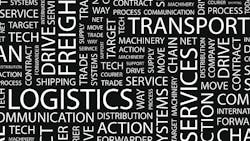Lean involves practices and layouts that reduce all but what is immediately needed on the manufacturing floor. That means eliminating wasted manpower, cumbersome processes and inefficient layouts. It's a way to cut through the clutter and improve efficiencies so that production runs are quicker and result in less waste. One of the key drivers behind lean manufacturing, however, is the promise of continued high-quality production.
The implications of lean manufacturing extend beyond the production floor, directly affecting warehousing and fleet operations as well. The warehouse is the heart of manufacturing operations, moving material in and completed products throughout the facility and out the door. Warehouse efficiency shows on the bottom line. Given the high traffic and importance of warehouses, the potential to go lean in these areas is huge.
Continuous Movement
Backorders are bad for customers and a sure way to deteriorate otherwise healthy, long-term business relationships. As you consider your lean manufacturing and warehousing options, always keep in mind the end goal of moving products, not people.
A common problem in many operations is for an order picker to go to one end of the room only to realize the current established work flow system requires them to turn around and go back. In a warehouse, where a cross-room excursion can take quite a long time, it's more than an annoyance; it's time-wasting and expensive.
Warehouses can be made leaner in three key ways: by creating a smarter layout for the inventory itself, by establishing a more intuitive way to track orders, and by establishing better communication between warehouse employees.
- A smart warehouse layout is crucial, and sometimes we make it more complicated than it needs to be, simply out of habit. A warehouse layout should take into account the queue of products being shipped out, as well as any materials coming in. Traffic should be clearly defined. Rather than rotating products in line for shipping, instructions should be very clear and easy to follow in terms of how to locate them. Similarly, vehicle and pedestrian traffic should be clearly defined and enforceable. Unwanted foot traffic can slow operations, as vehicles are forced to weave in and out to get where they need to be.
- To address wasted time while tracking inventory, find out where the process falls short. Consider the steps your warehouse workers must take each time a shipment comes in. Often, they have to walk to a separate office to either find the right form or print it out. Then it's back to the loading dock, followed by another trip into the office with the completed form to enter the data. Automated inventory tracking involving barcodesand scanners can be a huge time-saver and allow work flow to pick up significantly.
- Better communication is essential to a leaner and more productive warehouse. Think of the time warehouse workers spend simply walking back and forth to communicate. Walkie-talkies, cellphones and intercom systems can help reduce such waste and boost manufacturing output.
Going Paperless
You don't have to be manufacturing paper to have a warehouse full of it. It can make shipping and receiving convoluted, as you have to log products, materials, times in, anticipated times out, the last documented location of a product, etc.
An automated tracking system can help eliminate paper and its space-consuming storage. It can also help reduce potential for human errors.
Boost Customer Service
Customers begin to notice leaner operations in the warehouse. You are better able to service them in a timely fashion, and you are far less likely to drop the ball on an outgoing shipment. When you can expedite an order, it frees you up to take on new business at an increased rate.
Lean Extends to the Truck Fleet
Some elements of lean manufacturing and warehousing extend outside your facility. Consider your truck fleet—one of the most significant company investments you will make. You can make a serious dent in expenses just by getting your fleet under control in two key areas: long-range fleet monitoring and traffic in the immediate vicinity of your facility.
Similarly, the traffic flow in and out of a facility should be streamlined. You want a queue for entering that makes sense. You want lines of traffic that are well defined and engineered for easy entry and departing. You also want a loading dock arrangement that does not impede workers' ability to move about freely and do their jobs.
Jerry Matos is product specialist for Cherry's Material Handling.

